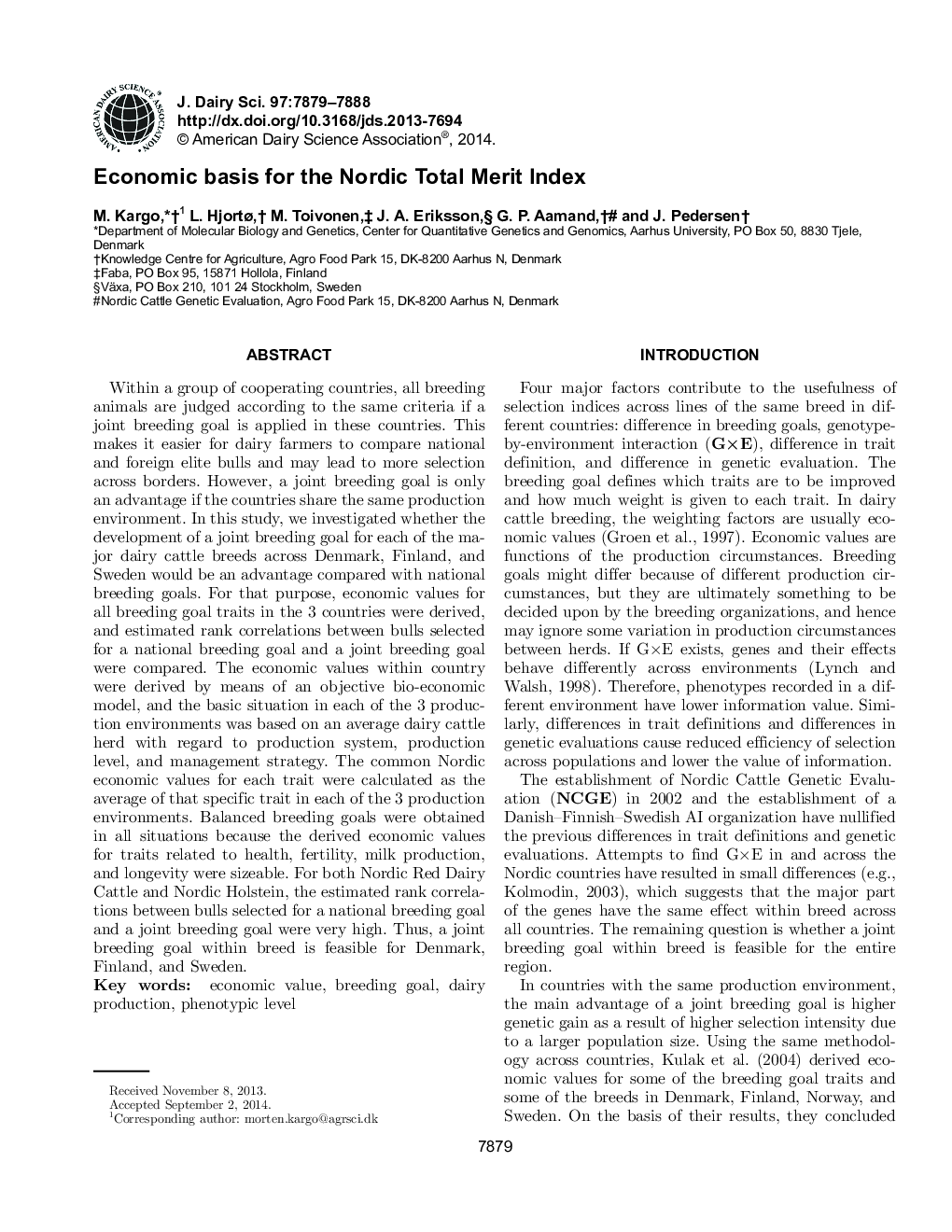| Article ID | Journal | Published Year | Pages | File Type |
|---|---|---|---|---|
| 10973503 | Journal of Dairy Science | 2014 | 10 Pages |
Abstract
Within a group of cooperating countries, all breeding animals are judged according to the same criteria if a joint breeding goal is applied in these countries. This makes it easier for dairy farmers to compare national and foreign elite bulls and may lead to more selection across borders. However, a joint breeding goal is only an advantage if the countries share the same production environment. In this study, we investigated whether the development of a joint breeding goal for each of the major dairy cattle breeds across Denmark, Finland, and Sweden would be an advantage compared with national breeding goals. For that purpose, economic values for all breeding goal traits in the 3 countries were derived, and estimated rank correlations between bulls selected for a national breeding goal and a joint breeding goal were compared. The economic values within country were derived by means of an objective bio-economic model, and the basic situation in each of the 3 production environments was based on an average dairy cattle herd with regard to production system, production level, and management strategy. The common Nordic economic values for each trait were calculated as the average of that specific trait in each of the 3 production environments. Balanced breeding goals were obtained in all situations because the derived economic values for traits related to health, fertility, milk production, and longevity were sizeable. For both Nordic Red Dairy Cattle and Nordic Holstein, the estimated rank correlations between bulls selected for a national breeding goal and a joint breeding goal were very high. Thus, a joint breeding goal within breed is feasible for Denmark, Finland, and Sweden.
Related Topics
Life Sciences
Agricultural and Biological Sciences
Animal Science and Zoology
Authors
M. Kargo, L. Hjortø, M. Toivonen, J.A. Eriksson, G.P. Aamand, J. Pedersen,
